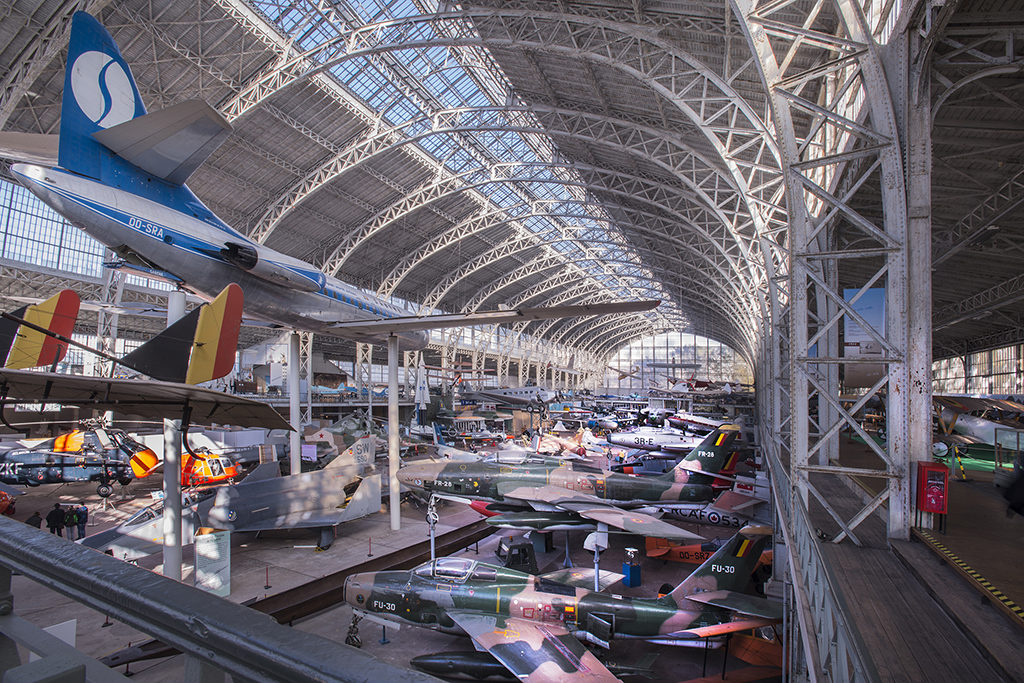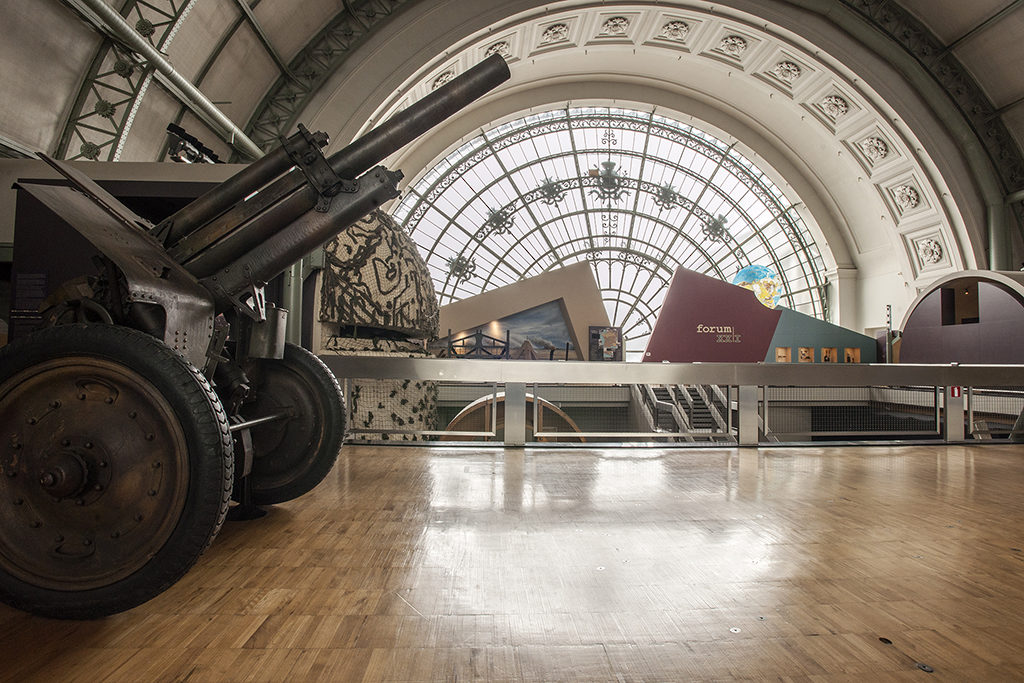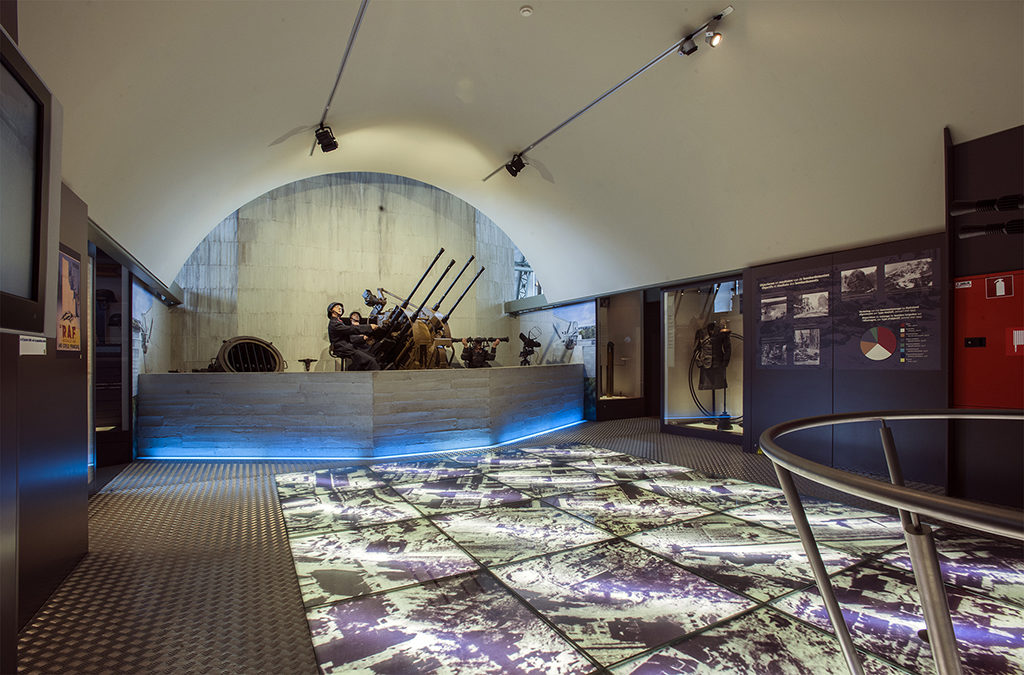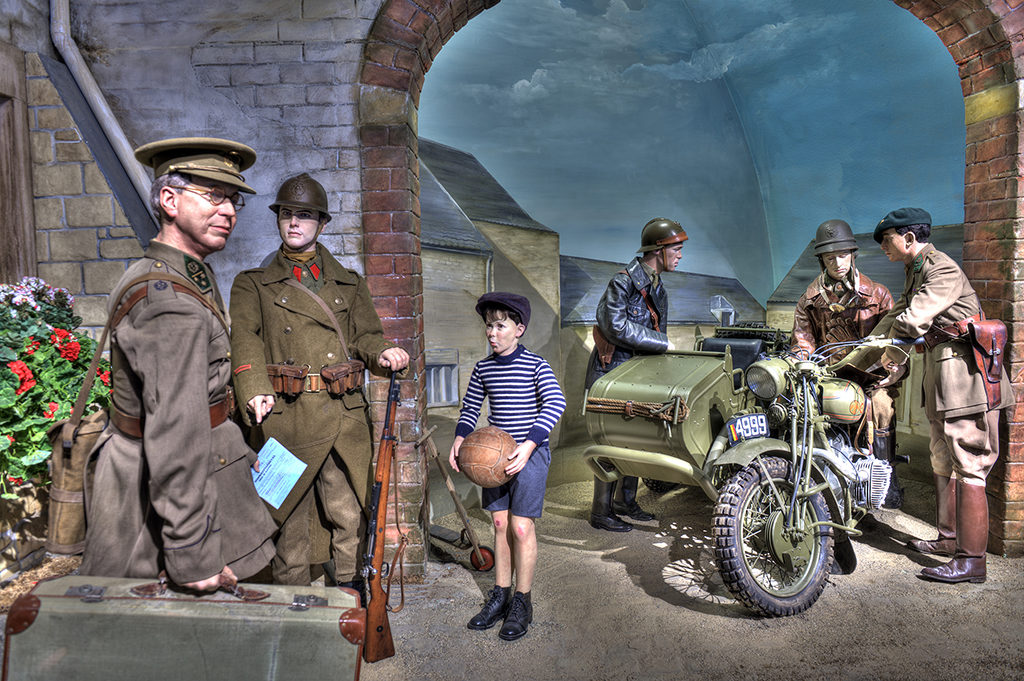- Museum
- Parc du Cinquantenaire 3, 1000 Bruxelles, Belgique
- http://www.klm-mra.be/D7t/en
- +3227377833 infocom@klm-mra.be
The Royal Museum of the Armed Forces and Military History, located in the Jubelpark (Jubileepark) in Brussels, presents thousands of unique and amazing objects, stemming from ten ages of military history. Not only uniforms and prestigious distinctions, but also works of art, musical instruments and an exceptional collection of planes, guns and tanks. One gallery is dedicated to the Second World War.
In 1910 the Worldexhibition in Brussels presented a section of military history to the public, with great succes. A decade later the authorities decided to create a military museum within the context of the great political and military tensions in Europe, in and after the First World War. This Royal Museum of the Armed Forces and Military History, opened in 1923, gives a presentation of ten ages of military history. It tells this history from a national and an international perspective and places it in a social and scientific context. The museum functions as a scientific institution and has three departments: military history, technology and scientific documentation and research.
The museum, that is housed in the two northernmost halls of the complex, presents a unique collection. Not just its 40,000 m2, but its diversity and the importance of the objects makes it one of the world’s largest and most important military museums. It offers an overview of what takes place in the military and its impact on society.
The Bordiau Gallery is dedicated to the large 20th century conflicts. It focuses on the last months of the Great War, on the interbellum and on the Second World War. Next to outfits and arms of key figures from these periods, it presents numerous personal belongings of anonymous soldiers and civilians.
The permanent exhibition in the Bourdiau Gallery is to be completed with new presentations about the German occupation of Belgium (1940-1944), the liberation (1944-1945), the nazi-ideology and race policy (1933-1945) and the war in the Pacific (1937-1945).




